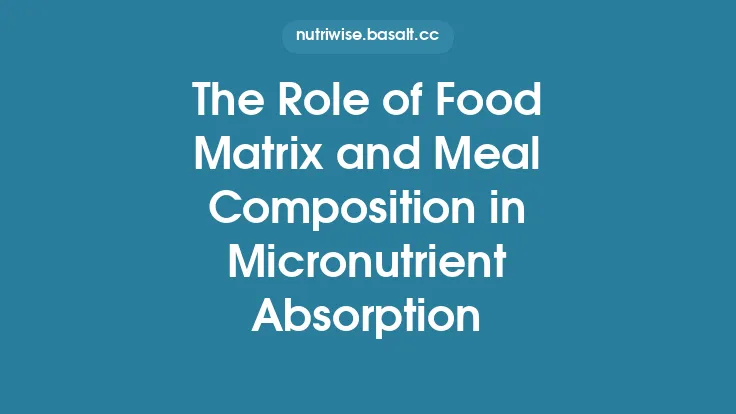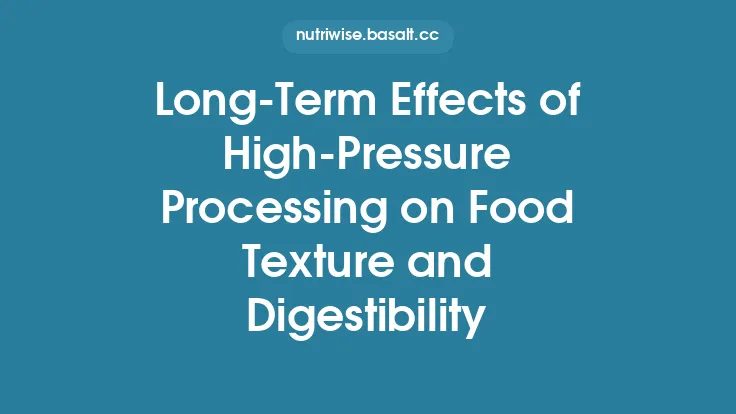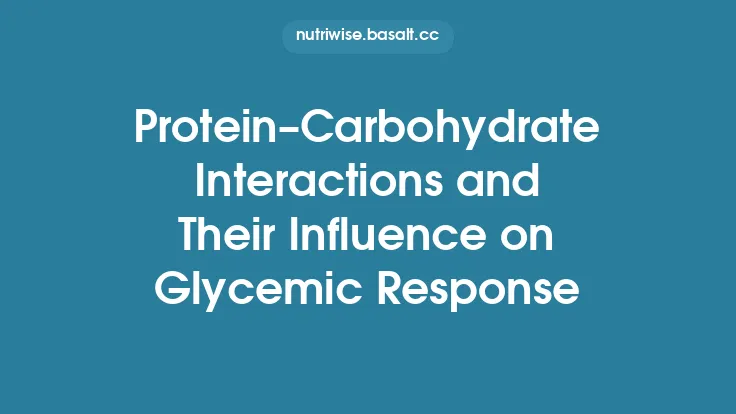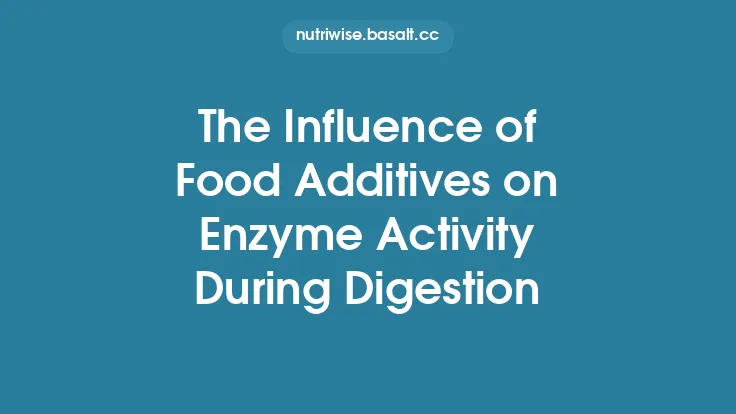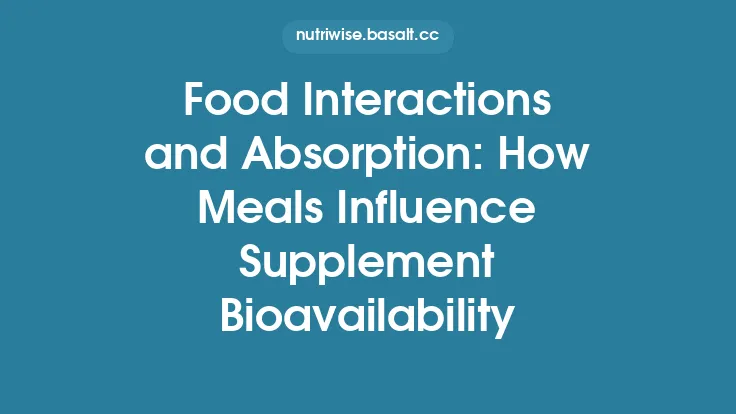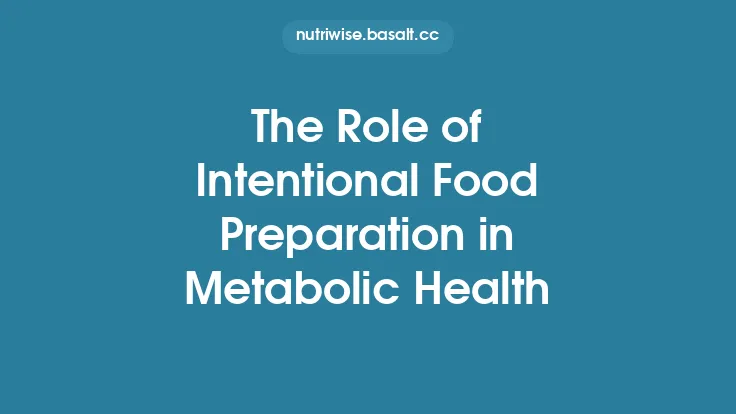Protein is the most biologically active macronutrient in the human diet, providing essential amino acids that support tissue repair, enzyme synthesis, hormone production, and immune function. Yet the amount of protein that actually reaches the bloodstream—its digestible fraction—depends heavily on how the protein is embedded within the surrounding food matrix. The matrix can either shield protein from digestive enzymes, alter the physical environment in which hydrolysis occurs, or facilitate the release of amino acids through synergistic interactions with other food components. Understanding these matrix‑driven mechanisms is essential for designing foods and meals that maximize protein utilization, especially for populations with heightened protein needs such as athletes, older adults, and individuals recovering from illness.
1. Structural Characteristics of Proteins Within the Matrix
Primary, secondary, and tertiary structures
The linear sequence of amino acids (primary structure) dictates the folding pattern of a protein, which in turn determines the exposure of peptide bonds to proteolytic enzymes. In a tightly folded tertiary structure, many cleavage sites are buried, reducing susceptibility to gastric pepsin and pancreatic proteases. Denaturation—whether induced by heat, acid, or mechanical forces—unfolds the protein, exposing hidden peptide bonds and often enhancing digestibility.
Quaternary assemblies and protein aggregates
Many plant proteins (e.g., legume globulins) form large oligomeric complexes that can be resistant to enzymatic attack. Aggregation can be promoted by disulfide cross‑linking, Maillard reactions, or high‑pressure processing. While some aggregates are readily solubilized during digestion, others persist, limiting amino acid release.
Protein–polysaccharide complexes
Electrostatic interactions between positively charged protein domains and negatively charged polysaccharides (e.g., pectin, arabinoxylan) can create coacervates or gel networks. These complexes may encapsulate protein, reducing enzyme accessibility, but they can also act as carriers that protect proteins from premature degradation in the stomach, delivering them intact to the small intestine where proteases are more abundant.
2. Physical State of the Food Matrix
Solid vs. semi‑solid vs. liquid matrices
The physical form influences the diffusion of digestive enzymes and the mixing of gastric contents. In a highly viscous gel (e.g., tofu, custard), the diffusion coefficient of pepsin is reduced, slowing hydrolysis. Conversely, liquid emulsions (e.g., protein shakes) present a large surface area, facilitating rapid enzyme–substrate contact.
Particle size and surface area
Milling, grinding, or micronization increases the surface area of protein‑containing particles, accelerating the rate of proteolysis. However, excessive reduction can lead to the formation of dense protein aggregates that are less accessible to enzymes. An optimal particle size balances surface exposure with minimal aggregation.
Matrix porosity and water holding capacity
Porous structures, such as those found in baked breads or extruded snacks, allow gastric fluids to infiltrate more easily, promoting enzyme penetration. High water‑holding capacity of the matrix can dilute gastric acidity, potentially reducing pepsin activity; yet it also aids in the swelling of protein fibers, making them more amenable to enzymatic attack.
3. Interactions with Lipids
Protein–lipid emulsions
When proteins are adsorbed at the oil–water interface of an emulsion, they become more exposed to proteases. The interfacial layer can be engineered to be thin, allowing rapid hydrolysis, or thickened with polysaccharide stabilizers to modulate digestion speed. Emulsified proteins often show higher in‑vitro digestibility compared with the same protein in a bulk solid.
Encapsulation within lipid droplets
Encapsulation of protein hydrolysates within lipid droplets can protect labile amino acids (e.g., lysine) from Maillard reactions during processing, preserving their nutritional quality. During digestion, lipases first act on the lipid phase, releasing the protein for subsequent proteolysis. This sequential breakdown can be advantageous for sustained amino acid release.
Effect of fatty acid composition
Long‑chain saturated fatty acids tend to form more rigid lipid phases, potentially hindering enzyme access to interfacial proteins. In contrast, unsaturated fatty acids create more fluid interfaces, facilitating protease interaction. Adjusting the fatty acid profile of a food can therefore fine‑tune protein digestibility.
4. Interactions with Carbohydrates
Starch–protein complexes
During heating, starch granules can gelatinize and entrap protein molecules, forming a matrix that limits enzyme diffusion. Retrogradation of starch upon cooling can further immobilize protein, decreasing digestibility. However, controlled gelatinization followed by rapid cooling can create a porous network that enhances enzyme penetration.
Non‑starch polysaccharides (NSPs)
Soluble NSPs such as β‑glucan and inulin increase the viscosity of the gastric phase, slowing gastric emptying and reducing the rate of protein hydrolysis. While this may appear detrimental, a slower release can improve amino acid absorption in the distal small intestine, where transporters are more abundant. Insoluble NSPs, on the other hand, can physically separate protein particles, reducing enzyme contact.
Maillard reaction products
When reducing sugars react with free amino groups on proteins during heating, early Maillard products (e.g., Amadori compounds) can block protease cleavage sites, lowering digestibility. Advanced Maillard products may also form cross‑links that render proteins resistant to enzymatic breakdown. Managing the timing and temperature of heating can mitigate these effects.
5. Anti‑Nutritional Factors Modulating Protein Availability
Protease inhibitors
Legumes and cereals contain trypsin, chymotrypsin, and cysteine protease inhibitors that directly impede pancreatic enzymes. Their activity is highly dependent on the matrix; for instance, protein‑rich fractions that are tightly bound to cell wall components may protect inhibitors from heat inactivation, preserving their inhibitory effect.
Phytic acid (myo‑inositol hexakisphosphate)
Although primarily known for mineral chelation, phytic acid can also bind to positively charged protein domains, forming insoluble complexes that resist proteolysis. The extent of binding is influenced by the pH and ionic strength within the matrix.
Tannins and polyphenols
These phenolic compounds can precipitate proteins through hydrogen bonding and hydrophobic interactions, creating aggregates that are less accessible to digestive enzymes. The matrix’s water activity and the presence of competing carbohydrates can modulate the strength of these interactions.
6. Processing Techniques Targeted at Matrix Modification
| Technique | Primary Matrix Effect on Protein | Impact on Digestibility |
|---|---|---|
| Thermal denaturation (boiling, autoclaving) | Unfolds tertiary structure; may cause aggregation if excessive | Generally improves digestibility up to a threshold; over‑cooking can reduce it |
| High‑pressure processing (HPP) | Disrupts non‑covalent bonds without extensive heating | Enhances protease access while preserving heat‑sensitive nutrients |
| Ultrasound (sonication) | Generates cavitation that fragments protein aggregates and cell walls | Increases surface area and reduces particle size, boosting digestibility |
| Fermentation (lactic, fungal) | Microbial proteases partially hydrolyze proteins; reduces anti‑nutrients | Significantly raises in‑vitro digestibility and bioavailability of essential amino acids |
| Germination/sprouting | Activates endogenous enzymes; degrades storage proteins and inhibitors | Improves digestibility and reduces protease inhibitor content |
| Extrusion cooking | Aligns protein fibers and can create a porous matrix; may induce Maillard cross‑links | Digestibility depends on moisture and temperature; optimized conditions yield high digestibility |
| Enzymatic pre‑treatment (e.g., papain, bromelain) | Directly cleaves peptide bonds before consumption | Produces hydrolysates with rapid absorption, useful for clinical nutrition |
7. In‑Vitro and In‑Vivo Assessment of Protein Digestibility
Standardized static digestion models
The INFOGEST protocol simulates oral, gastric, and intestinal phases using defined enzyme concentrations, pH trajectories, and incubation times. By measuring the release of free amino acids and small peptides, researchers can compare how different matrix configurations affect proteolysis.
Dynamic gastrointestinal simulators
Systems such as the TIM‑1 and SHIME models incorporate peristaltic movements, gradual pH changes, and realistic transit times. They allow observation of how matrix viscosity, particle size, and encapsulation influence the kinetics of protein breakdown and subsequent absorption.
Digestible Indispensable Amino Acid Score (DIAAS)
Unlike the older PDCAAS, DIAAS evaluates the ileal digestibility of each essential amino acid, providing a more precise picture of protein quality within a specific matrix. Foods with high DIAAS values are considered superior sources of bioavailable protein.
Human tracer studies
Stable‑isotope labeled amino acids (e.g., ^13C‑leucine) incorporated into test foods enable direct measurement of post‑prandial plasma appearance rates. These studies reveal how matrix modifications translate into real‑world absorption kinetics.
8. Practical Implications for Food Design
- Tailor matrix porosity – Incorporate air‑cell formation (e.g., via leavening or freeze‑drying) to create channels that facilitate enzyme diffusion without compromising product texture.
- Control protein–carbohydrate interactions – Use limited heating of starch–protein blends to avoid excessive entrapment, or apply enzymatic starch hydrolysis prior to protein addition.
- Optimize lipid emulsification – Select emulsifiers that form thin protein layers at the oil–water interface, ensuring rapid protease access while maintaining emulsion stability.
- Mitigate anti‑nutritional factors – Apply mild heat or fermentation to deactivate protease inhibitors and reduce phytic acid levels, especially in legume‑based matrices.
- Leverage novel processing – Combine high‑pressure processing with brief ultrasound treatment to achieve maximal protein unfolding and matrix disruption with minimal nutrient loss.
- Design for targeted release – For clinical nutrition, embed protein hydrolysates within a slowly digestible matrix (e.g., high‑viscosity fiber gel) to provide a sustained amino acid supply over several hours.
9. Future Directions in Matrix‑Focused Protein Research
- Multi‑omics integration – Coupling proteomics with metabolomics during simulated digestion can map the fate of specific peptide sequences and identify bioactive fragments generated by matrix interactions.
- 3‑D food printing – Layer‑by‑layer deposition allows precise spatial arrangement of protein, lipid, and carbohydrate phases, enabling systematic study of how micro‑architectural patterns affect digestibility.
- Personalized matrix engineering – Using individual gastric pH profiles and enzyme activity data, computational models can predict optimal matrix formulations for specific consumer groups (e.g., elderly with reduced pepsin output).
- Sustainable protein sources – Investigating matrix effects in emerging proteins (e.g., insect, algae, cultured meat) will be crucial for ensuring that novel foods deliver high‑quality, digestible protein.
By dissecting the myriad ways in which the food matrix modulates protein accessibility, researchers and product developers can move beyond simply adding more protein to a diet. Instead, they can engineer foods where the protein is presented in a form that the digestive system can efficiently break down, absorb, and utilize. This matrix‑centric perspective is pivotal for addressing global nutrition challenges, supporting athletic performance, and improving health outcomes across the lifespan.
